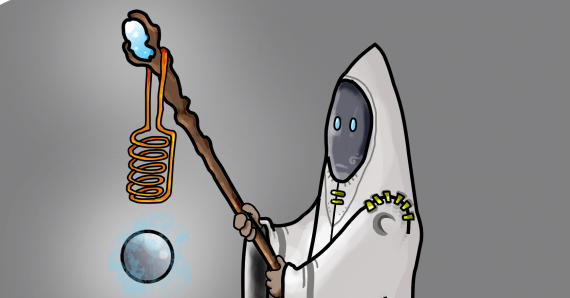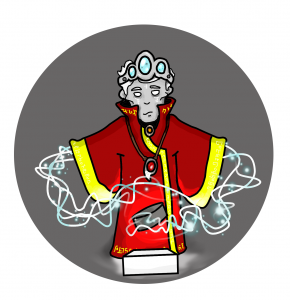
June 23, 2015, by Nicolas Schneider
Levitation spell (magnetic levitation technology)
Since the beginning of time humans have dreamed of possessing great magical powers. The power of casting fire, strong winds and many other traits which are supposedly possessed by divinities, heroes and magicians of the saintly days of yore. One of them is the art of making objects float in the air.
In the Necronomicon of the electrical engineer there are three ways to make objects float. The first one consist of the use electrostatic, which deals with slow-moving electrical charges. Like your hair being attracted to a balloon that you a rubbed on your woolen pullover (I hope everybody knows that magic trick … If not, you have had a sad childhood). The twain others belong to the nebulous realms of magnetism. One is only narrated in the Kabbalah and the Faustus legends of physics: the usage of superconductors to achieve diamagnetic levitation and flux trapping (more info about superconductors: here. A cool video of levitation with superconductor: here). But to be honest with you, I don’t dare myself to wander into this domain for this short introduction of Levitation spells.
At last one that I wish to highlight here is magnetic levitation. Even here there are two major schools: by using diamagnetic properties of an object with a very strong magnetic field you could levitate many kinds of objects, like a frog (how crazy is that!) but high are the efforts needed to make this exercise a success. Don’t believe me, watch it by yourself: here
The other one uses electromagnets. The levitation is made with quite some ease but the catch is that the material has to posses ferromagnetic properties (darn, but nothing is perfect!). The easy way to check if something is ferromagnetic is to bring a magnet close to it, and if it sticks (without glue obviously) it is ferromagnetic. The levitation is based on this attraction of magnets and Iron. But most of you will have realized that this doesn’t really work for making objects levitate. Therefore from my spell book of electrical engineering I will teach you a new spell “electromagnets”. The magic is that you can create a magnet using a coil of wires by supplying it with a current. The great part is you can change the strength of the attraction between the electromagnet and the Iron by changing the current.
I will now clearly show how the levitation works, with the help of an old electrical wizard (Teguas Lass):
Teguas Lass holds on his electrical staff a coil, with his ancient power he can change the current in the coil. He is able to maintain the ball floating in the air by changing the current in the coil. Teguas Lass observes the ball. When the ball is getting close to the coil he will reduce the power in his staff however if the ball starts to fall he will increase the power of his staff. This way the ball can float in the air.
Sadly our current world has lost the ways of ancient magic. But this doesn’t mean that it makes the actions of the wise Teguas Lass impossible to us. In our now magic less world, some solutions were found to replace the old powers. Instead of using a power staff, we are using a power supply, that will feed current to the coil in order to generate the force. We could try to regulate that force manually with someone changing the power supply as the ball is getting closer or further from the coil. That would be very containing and might not always work. Therefore we use a controller (some sort of computer) that with the help of a position sensor, will automatically change the current from the power supply to maintain the Iron ball in a certain position.
Levitating a Iron ball is obviously fantastic, but there is not to much use in this. The main advantage of the levitation is that an object can be maintained in a position without any need for a contact. , therefore if they are moving they subject to much less friction in their motion. Which means that we can make objects move faster. As crazy that it might sound some trains are magnetically levitated ( they are called maglev trains). Like the record breaking Japanese Lo series that reached 603 km/h on the 21st April 2015 (more info here ). For rotating shafts magnetic bearings and bearingless machine where developed. They maintain the shaft in a certain position while still allowing it to rotate freely. Which leads to possibility of higher rotational speed and a much long durability. The absence of friction reduces the wear of the machinery and the lubrication is no longer needed. I would recommend you to visit the website http://www.magneticbearings.org/ that will give you a lot of insight on the magnetic levitation and it’s uses. (For even more information here and here) In aerospace we dream of a turbo engine without any oil, and magnetic levitation could be one solution to this. One other great features of magnetic bearings is that since you can control quite precisely the position of the shaft. You can therefore reduce vibration and reduce unwanted rotodynamic effects.
I personally work on bearingless machine: Those are electrical machine that rotate a shaft while magnetically levitating it. It’s like a two in one device. The aim off my work is to use this type of machine to reduce vibration and try to avoid some rotodynamic challenges. At the end look at how this could be integrated to an aero-engine.
No comments yet, fill out a comment to be the first




Leave a Reply